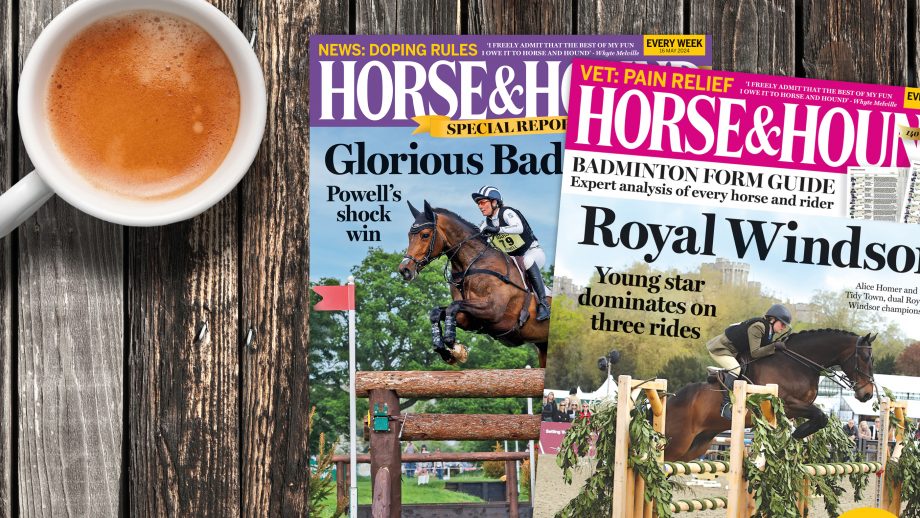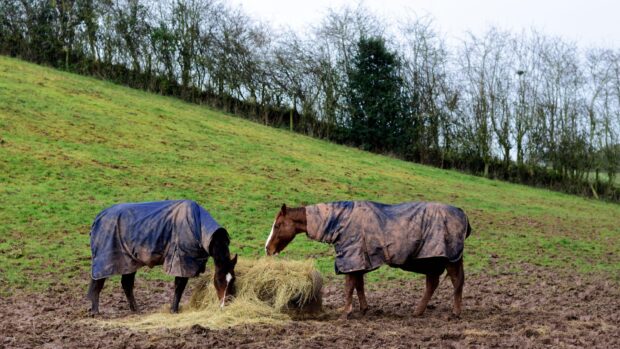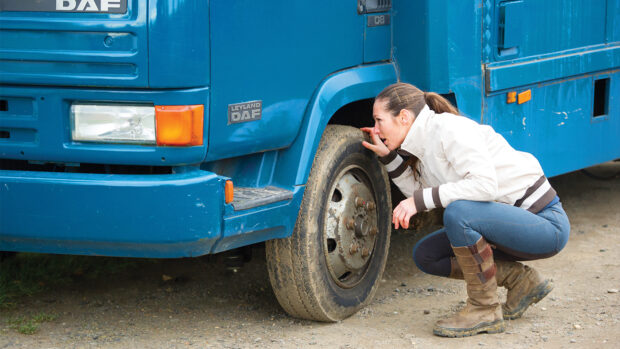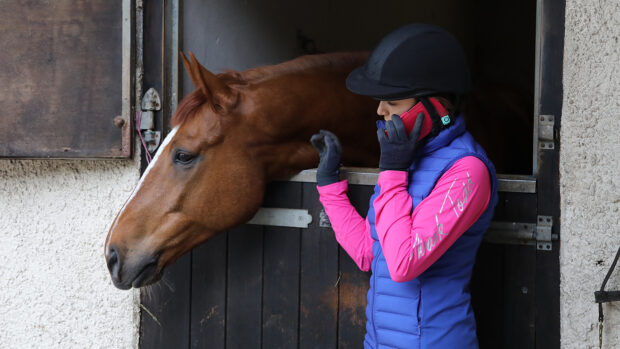Every beloved horse is priceless to its owner, whether a 14hh super-cob or an international competitor. But if your four-legged friend happens to come with a six-figure value, how do you go about insuring him – not just as your much-loved partner, but also a significant asset? This is where high-value horse insurance comes in.
“The term ‘high-value horse’ is subjective and what is deemed high value by one insurance provider may not be by another,” says Anthony Burnett, equestrian underwriting specialist at SEIB.
As a benchmark, proof of purchase and purchase price is generally required along with a horse’s competition record in order to substantiate its value.
“Vettings, X-rays and the horse’s clinical record from the vets may also be needed, but this will depend on the individual risk details and the needs of the particular insurance provider,” he says.
For many insurers dealing with high-value horse insurance, there’s a value threshold that, when exceeded, means handing over veterinary paperwork.
“For horses over the value of £17,500, we require a five-stage vetting with X-rays completed within 30 days of the start of the cover,” says Katie Jackman, assistant underwriter at British Pet Insurance, part of the Petcover Group.

Five-stage vettings, including X-rays, are required for horses over a certain value – this threshold varies between insurers. Credit: Getty
That said, ascertaining the value of a superstar equine only comes into play with certain cover types.
“Many owners choose a lifetime policy just for veterinary cover,” says Alice Holborow, equine and partnership manager at Agria. “In such cases, a horse’s value is irrelevant to setting the premium. The cost is determined largely by what the horse is being used for.
“Only when a claim is made for death or loss of use do we need to ascertain a horse’s value, since we pay out for the ‘sum insured’ or current market value, whichever is less,” she adds.
If a horse exceeds the insurer’s upper value threshold for a standard quote – which could be anything from £10,000 to £30,000 or more – it’s best to contact the broker directly to discuss a potential policy in more detail, especially if you want to cover death or loss of use.
“The insurer obviously risks having to pay out a large sum if a high-value horse should die, which is why the horse’s value is factored in when preparing a quotation that includes death and loss of use cover,” explains Alice.
What is the horse’s job?
Like any equine insurance policy, a high-end horse’s activities affect premiums substantially.
“The primary risk for us, as an insurer, is the horse’s job – what it will be doing,” continues Alice. “It stands to reason that a horse that is out advanced eventing is at higher risk than one that is only hacking.”
Another risk factor is competitive activity outside the domestic circuit.
“Generally, horses of higher value compete internationally, and the policy should therefore accommodate that, including transit within,” says Harriet Walker, operational manager at KBIS.
“For example, our standard policy covers the horse in Western Europe. Cover to other countries, including transit, can also be arranged.”

International travel may not be included in some policies so check with your broker. Credit: Lucy Merrell
Risk may even extend to the effects of a change of rider. Zoe Wood, divisional director at Lycetts, a high-value sport horse and bloodstock insurance specialist, says: “Often, these high-value horses are competed and sold by some of the best riders in the UK and there is every chance they might be bought by a less experienced rider or an amateur. This can present a problem in terms of maintaining the horse’s value from the purchase price.
“For example, a junior may take on an expensive horse and spend two years competing at a much lower level. The horse, now two years older, is likely to have reduced in value.”
A horse’s ownership or maintenance status can also come into play.
“Whether a horse is home-bred or on loan will affect how we assess the risk,” adds Petcover’s Katie. “This may also affect the premium or the sum insured for the horse. For example, if the horse is home-bred and under a certain age, we will use the stud fee to calculate the sum insured.”
How is market value of a high-value horse assessed?
A sport horse or racehorse’s career is ever-evolving and, as such, it is essential the owner maintains an accurate picture of his market value.
“Ultimately, the higher the value of the horse, the higher the risk in the event of a claim and therefore the higher the premium. This means it is in the policyholder’s best interest to ensure the value is accurate,” remarks Harriet. “The most common scenario would be if the horse has had an injury and therefore not been able to compete; the value may be affected.
“While we would use the policy renewal to review, the sum insured of the horse can be amended at any time throughout the policy year. This means that if the horse has had a successful season and the value has increased, we can increase the sum insured midway through the policy to reflect this,” she adds.
Katie adds that the owner is the driving force in any revaluation.
“We advise that it is the client’s responsibility to review the value of the horse regularly and ensure the insurance is updated accordingly.”
Market research is conducted to help build an up-to-date picture of a horse’s value.
“At renewal, we’d look at race or competition records and make sure everything’s up to date,” says Zoe. “For racehorses or bloodstock, it’s easier. They nearly all go through the sales at an early age, deciphering their fair market value. But then if a racehorse was bought as a yearling, for example, and hasn’t run as a two-year-old, we’d want to understand why.
“That said, we see lots of success stories and we wouldn’t want a client to be caught short if their horse has gone up in value following an impressive win,” she explains.

Determining the value of home-bred sport horses can be more nuanced. Credit: Boots & Hooves Photography
Sport horses, especially home-breds, are a more nuanced insurance puzzle to solve.
“The results don’t come through as quickly as a two-year-old running in the Coventry at Royal Ascot,” continues Zoe. “Sport horses compete into their late teens, sometimes not reaching their top potential until the age of 16.
“If a horse is home-bred with no purchase price to go on, it becomes even trickier. This is where we’d talk to industry specialists. We might seek a British Showjumping coach or someone in the breeding industry who could shed some light and justify the value,” she adds.
This is a level of knowledge that’s testament to the specialised skill required to underwrite a high-value equine policy.
“Our equine underwriting team all come from equine backgrounds of varying disciplines, so are able to be up to date on market trends and values,” says Harriet.
Ultimately, as Zoe confirms, a high-value horse owner can likely expect to have an open dialogue with their broker.
“We have regular, personal customer relationships with these clients, because they’re spending significant sums on premiums, often on multiple horses,” she explains. “We’ve insured incredible horses for over £10m; it’s a very bespoke service and we’re often in communication with the clients monthly, if not more regularly.”
Too expensive to insure?
Are horses ever too expensive to insure? The simple answer, according to Zoe, is no.
“However, these exceptionally high-valued horses can present complex risk placement and will often require several underwriters to share the total value of the insured animal,” she cautions. “For example, on a recent £5m placement arranged by Lycetts, maybe as many as eight underwriters, all of whom live and breathe the racing and sport horse industries, would ‘take a line’.”
In some cases, the risk might be split.
“For extremely valuable horses – those valued in the millions – insurers will share the risk with each other, so each insuring a certain percentage of the horse’s value,” explains Anthony.
That said, some owners with a portfolio of expensive horses simply take on the financial risks personally, with no insurance policies in place – and no requirement thereof.
A vet’s view when insuring high-value horses
Cath Hill MRCVS has a foot in high-value horses from two sides: as a vet and an owner. In her spare time, Cath events up to two-star with a horse, Vigo, she produced herself. Her sights are set on three-star this year.

Vet Cath Hill riding Oeps Van Het Weidehof in the two-star at NAF Five Star International Hartpury Horse Trials 2024. Credit: Alamy
Of pre-purchase examinations, she says: “We always strive to do a good job whatever price the horse is; a vetting is a vetting. With horses in the higher income bracket, there is more pressure in terms of financial comeback for our client, the purchaser. That said, if we know they intend to insure, vets can be more confident that if something were missed, they’d have a bit of a backstop.”
“With six-figure horses, often buyers won’t bother with a vetting, because they’re not going to insure it – they want the top performers and aren’t too worried about the odd problem.”
Cath acknowledges that good performers at low, local level can also creep into the £20,000–30,000 bracket these days, too – and it’s often these clients that rely on insurance for their horses the most.
“I think vets get a bad rap for pushing up insurance fees,” she continues. “But personally, I see it as an opportunity to give a client more options, not a green light to spend more money. There are more doors open, and referral to equine hospital is possible. Without insurance, referral isn’t an option for most owners.”
Key takeaways for high-value horse insurance
- Consider what type of cover you need
- Speak directly to brokers to tailor the cover
- The horse’s job will influence the premium
- Do you need cover for international travel?
- Keep the horse’s market value up to date
- To stay up to date with all the breaking news from major shows throughout 2025, subscribe to the Horse & Hound website
You may also be interested in:

Exclusions, death cover and other common horse insurance misconceptions

Insurance industry to work together – with vets — to ensure horse cover can continue

Major legal ruling on liability has implications for horse owners

Horse insurance policy offering lifelong cover among new innovations

Subscribe to Horse & Hound magazine today – and enjoy unlimited website access all year round




